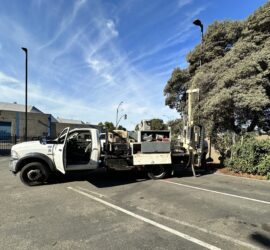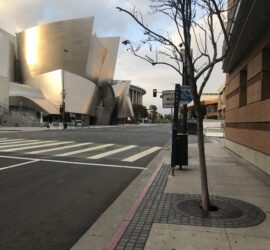Geotechnical Engineer Los Angeles
A Geotechnical Engineer in Los Angeles has the professional responsibility to study the local geology, and design custom foundations, and protect developments from various geological hazards. Geological hazards affecting structures can be the result of abrupt or gradual natural disasters. For instance, a catastrophic landslide or earthquake are examples of abrupt natural disasters. Whereas liquefaction, subsidence and creeping landslides are examples of gradual geological hazards. Altogether, a geotechnical engineer incorporates soil sciences, geology, and rock mechanics into civil engineering for successful land development projects. Updated October 29, 2023.
Geotechnical Engineering Service
Geo Forward is a leading provider of geotechnical engineering and geological engineering services in Southern California. Our expert engineers and geologists are licensed to practice throughout the State. The Geo Forward team works on a variety of development projects, from residential to commercial and industrial land-uses. Moreover, public sector projects, such as road improvements and bridge construction (as well as parking facilities) are an area of expertise. In the same way, Geo Forward duly provides environmental engineering services. For a consultation with a professional geologist, call (888) 930-6604.

Reason Geological Engineers are in Need
A modern-day scenario that highlights the necessity and importance of a geotechnical engineer is the case of the San Francisco Millennium Tower sinking. In this case, a 350 million dollar luxury high-rise condominium building is sinking (a total of 18 inches since its construction 10 years ago). As a result, one side of the 58-story building is tilted with an offset of 3 inches. Although the cost to build this high-rise is estimated at 350 million dollars, experts believe it can cost up to 500 million dollars to mitigate.
Buildings
Since the beginning of human civilization, mankind has been using the earth’s surface as the base for its developments. For instance, building foundations, water ducts, transportation systems, parking structures and more, are only some of the subsurface structures humans rely on. And the safety of its users and the success of each development relies on the sustainability of the earth underneath it.
Liquefaction & Landslide Potential
Liquefaction is one type of hazard a geotechnical engineer in Los Angeles works with. This hazard occurs in soil as a result of strength loss, saturation, cyclic loading, and seismic activity. Soils most susceptible to liquefaction hazards are loose fine grain sands with uniform grading. Furthermore, four conditions are typically required for liquefaction to occur.
- The soils must undergo saturation.
- The sedimentary layers must have a lower-medium density.
- The materials must have little to no cohesion.
- The soils must undergo ground shaking as a trigger mechanism.
The State of California Seismic Hazard Zones map shows the nature of liquefaction in soils, by region. Equally as important, common landslide hazard zones are additionally part of these maps. Based on the nature of each project and location, a geotechnical engineer in Los Angeles will provide recommendations for mitigating the geological hazards within.
Faulting
Due to the proximity of a major plate tectonic boundary in California, active faulting is a highly important pillar of geotechnical engineering. Areas nearby faults are seismically active and are subject to strong ground motions by earthquakes and faulting. If a project is in a portion of the State that is seismically active, special geotechnical design parameters will need to apply. These areas are identifiable using State Fault Maps, per the Alquist-Priolo Fault Zoning Act.



